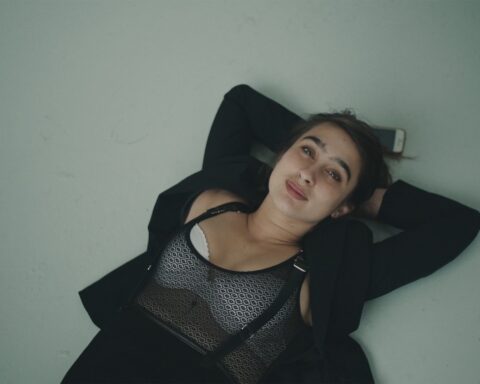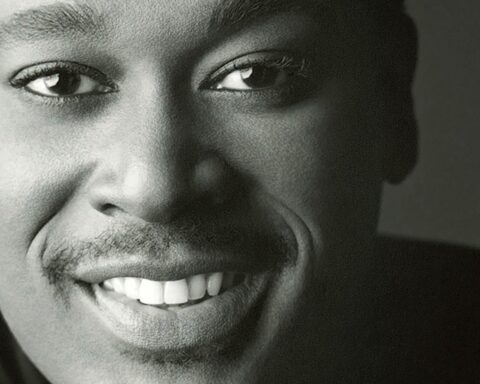Queen of Hearts: Audrey Flack
(USA, 75 min.)
Dir. Deborah Schaffer and Rachel Reichman
Deborah Schaffer and Rachel Reichman’s Queen of Hearts: Audrey Flack offers audiences a retrospective look at the career of the eighty-eight year old American artist, most known as an early photorealist painter of the 1960-70s. This is a documentary portrait of a metamorphosing artist with a unique point of view, but Queen of Hearts is a largely conventional film that forgoes a critical approach to its subject in favour of an adoring, sometimes saccharine lens. This conventionality comes as a slight disappointment, considering Flack’s career-long artistic unconventionality. Structurally, Queen of Hearts might have benefitted from the similar flamboyance, energy, and penchant for rule breaking embodied by Flack’s work: large scale hyperreal paintings that fuse together poppy postmodernism with the iconographies and trompe l’oeil illusions of Baroque art.
The film is narrated by interviews conducted with Flack, as well as a small cohort of art historians, curators, and gallerists who trace the artist’s beginnings as a young Cooper Union student brushing shoulders with the abstract expressionists all the way to her present status as a senior American painter and sculptor. Jackson Pollock is cited as a key inspiration, his abandonment of the rigidity of the picture plane a large influence on Flack’s work, even as the hyperreal representational style she matures into seems superficially at odds with paint flung on a floor. The abstract artist Josef Albers, who selected Flack as a Yale scholarship student is shown in a much less flattering light. As Flack stands in a gallery retrospective of Albers’ work, she details being sexually assaulted by him in the classroom. While this is not Flack’s first public disclosure of her assault, the subversiveness of her recounting it in this particular location resonates; as does her subsequent takedown of Albers’ famous square paintings as, simply, “cold.”
Of its many goals, the feminist art movement of the 1960s and 1970s was interested in the recovery of maligned or buried works by women. By offering a detailed record of her contributions to this period, Queen of Hearts successfully honours Flack as a key part of this history. As we watch Flack’s star rise, her innovative work becomes increasingly threatening to a patriarchal art world. Interview footage with a much younger Flack charts a mounting frustration in response to misinterpretations of her work shaped by the misogyny and anti-Semitism of notable critics; as well her ostracism from realist art circles who rejected painting from photographs. Eventually, these pressures became so overwhelming that Flack stopped painting and pivoted to sculpture.
The artist’s love of her two daughters, who appear in several of her paintings, is a strong undercurrent in the film. The documentary, which rightly identifies the sheer lack of available resources about autism in the 1950s-60s, also explores the phenomenon of ‘refrigerator mothers’—a theory of misinformation held in high regard at that time, which suggested that cold, aloof mothers were to blame for their child’s condition. It was a charge that greatly pained Flack after the birth of her first child. Unfortunately, Queen of Hearts doesn’t treat the joys and depth of this mother-daughter relationship with the multidimensionality it deserves, and at worst reduces it to a “struggle” in the life of a great artist.
Trickier still is the film’s difficulty in navigating the principal controversy of Flack’s sculpture period: the commissioned monument to the 17th century Portuguese-English queen Catherine of Braganza, which would have been erected in Queens, a borough in New York City that was named after her. Opposition intervened because of Braganza’s ties to the Atlantic slave trade and the commission was cancelled. Here, Flack’s ignorance in accepting, developing, and beginning the project comes across as a major oversight that gets reduced to a fleeting sequence capped by an art historian dubbing the affair a “cautionary tale.”
The need of artistic biographies to be inspiring is the reason that so many of them (in both narrative and documentary cinema) are relatively shallow. Every detail in Queen of Hearts is mobilized towards framing Flack as an inspiring figure. This is an unnecessary move, because Flack is open, contemplative, and sharp. Her tenacious need to create is naturally infectious and the film is best when she’s speaking for herself.
Queen of Hearts: Audrey Flack screened at the 2020 Calgary International Film Festival.











